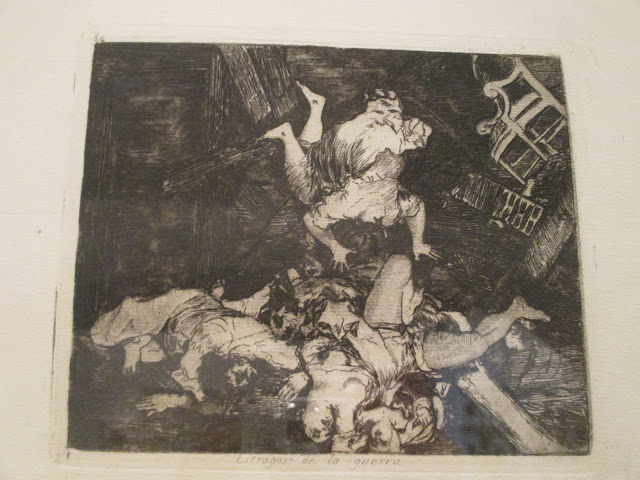Castillo de Luna ....Castle of the moon, named
after the Luna family and in particular an
illegitimate son Don Álvaro de Luna y Jarana who was endowed with the castle by
the Order of Santiago in 1445. How did an illegitimate boy from the minor nobility of Aragon become
so successful?
He was an ambitious cultured rogue who took
full advantage of his childhood association with Juan II de Castilla to gain power,
prestige and riches.
He
was introduced to the court as a page by his uncle Pedro de Luna, archbishop of
Toledo, in 1410, Pedro de Luna later became antipope as Benedict XIII.
Álvaro
was charming and ambitious, he soon secured a commanding influence over the young
Juan II. However, during the regency of King John's uncle Ferdinand, which
ended in 1412, he was not allowed to be more than a servant but when Ferdinand was elected king of Aragon, and the
regency was assumed by the king's mother, Catherine of Lancaster, Álvaro became a very important person,
the "contino" or old friend of
the King.
He became Álvaro de Luna, Maestre de la
Orden de Santiago y Condestable de Castilla and took over the castle in 1445 as part of
his unscrupulous machinations to climb
to ever more elevated positions of power due to his privileged position as the
king’s confidante.
He instigated
the impressive building we see today within the old walls including the Torre
del Homenaje and its neighbouring tower , the space between spanned by a
massive arched bridge with drawbridge for times of danger.
He stamped the moon
of his family name throughout the castle and on surrounding monuments including
the stone fuente just outside the castle walls.
He was confident in founding a
powerful dynasty but his ambition was thwarted
when the second wife of Juan II ,
Isabella of Portugal, became
increasingly offended by the immense influence of Alvaro, finally the king succumbed to Isabella’s
demands, Alvaro was arrested, tried and
condemned to death. He was executed by
beheading at Valladolid in 1453, King Juan II died the following year in 1453. The Lunas were disgraced but the castle
remained as a witness.
Before being know as Castillo de Luna, the
castle was a simple fortress built by the Moors in an important strategic
position, close to the Portuguese border and equidistant between Valencia de
Alcantara and Badajoz. During the re-conquest
the castle passed into Christian hands under Fernando II in 1166, was taken
again by the Moors in 1184 and finally was re-conquered in 1217 when it was
given to the powerful Order of Santiago who appointed various keepers linked to
the kings of Castilla and Aragon.
It was during this period that the church of
Santa María del Castillo was built within the walls during the XIII century in
the late Romanesque and Gothic style.
After the downfall of Álvaro de Luna the
castle passed into the hands of Don Beltran de la Cueva from 1465-1472. Several buildings were added including
the pentagonal tower.
The castle fell into considerable dilapidation
and abandonment over the next centuries.
During the war of succession between 1700
-1714 Alburquerque was invaded by an Anglo-Portuguese army. The Portuguese added a massive defense system
of walls designed in the style of Vauban similar to the defense systems of
Elvas and Estremoz in Portugal. Also they
added some more congenial
conditions in the Torre del Homenaje,
fireplaces, tiled floors and larger windows with deep window seats overlooking
the vast views.
In 1716 the Alburquerque was again in
Spanish hands and again fell into a slow decline.
Despite the deterioration caused by the passage of time and lack of maintenance there are still many impressive features, especially the three complete defense walls, the gates and the massive keep built by Álvaro de Luna.
The small town of Alburqerque still thrives around the castle walls. There is a Medieval fiesta every year in August.
There are guided tours of the castle in Spanish : a.m. at 11.00, 12.00 and 13.00 and p.m. at 16.00 and 17.00


























































